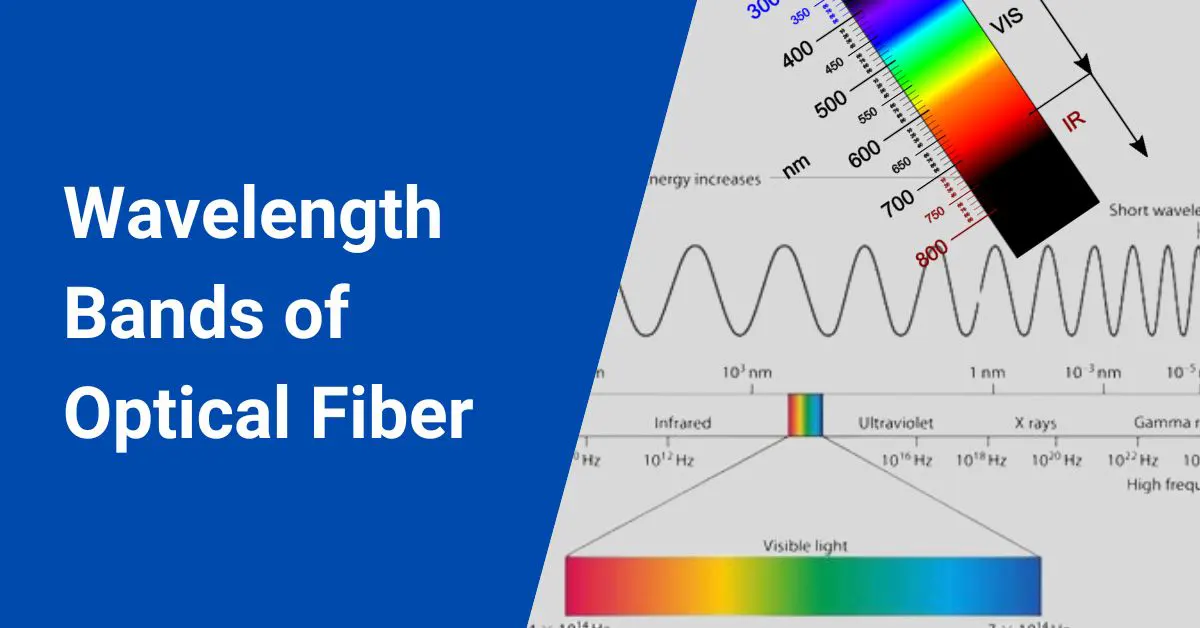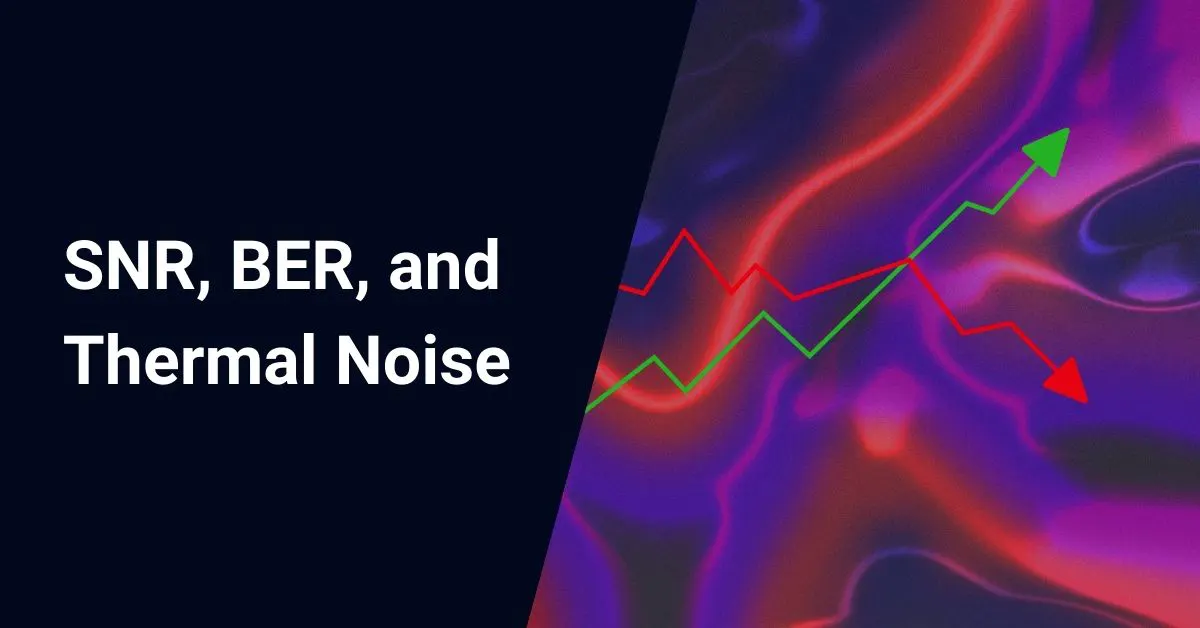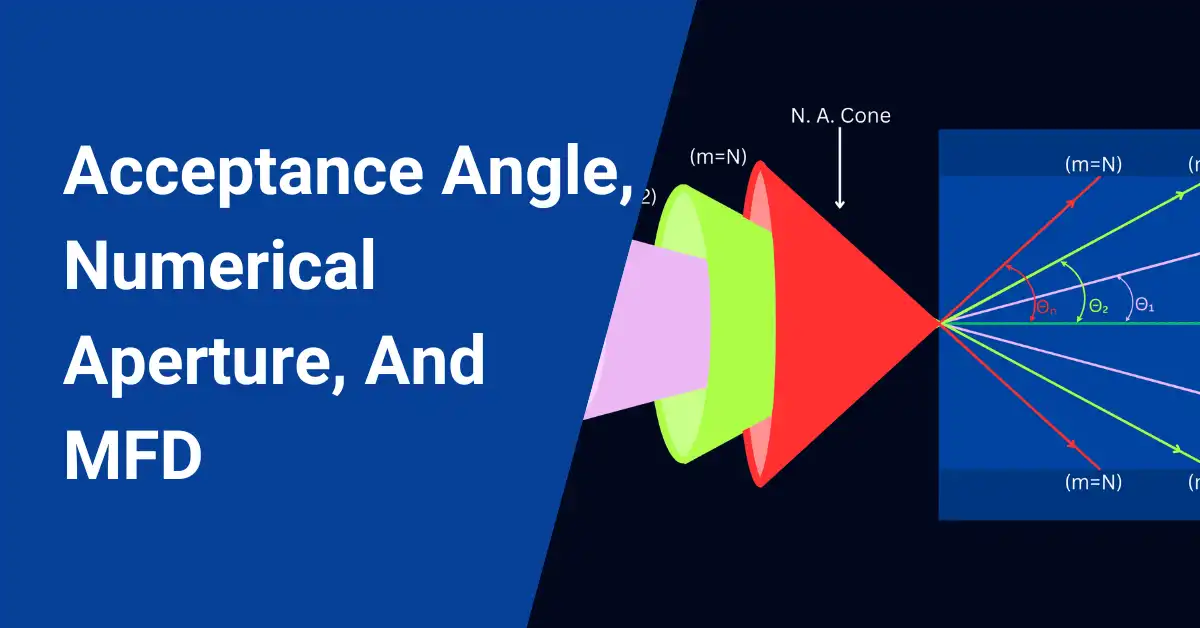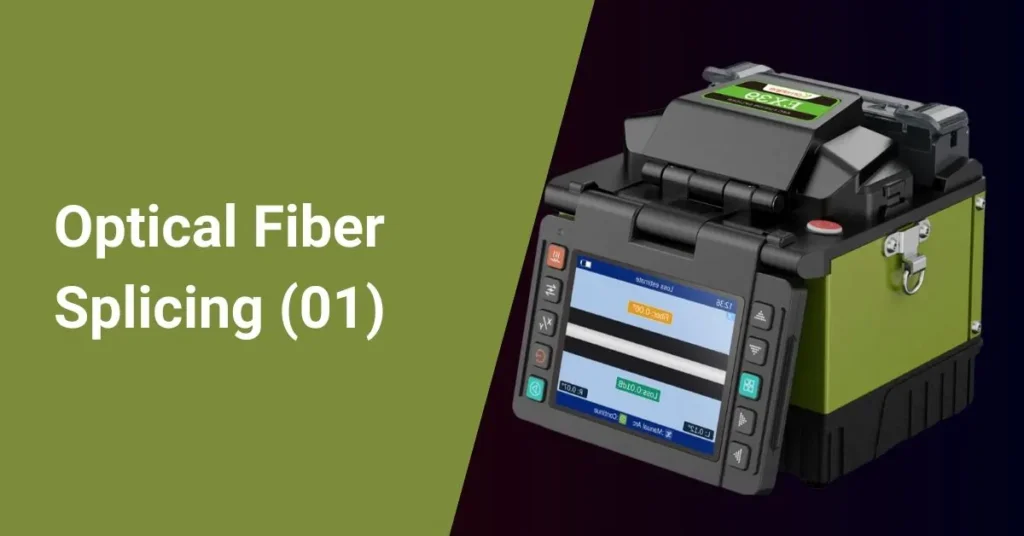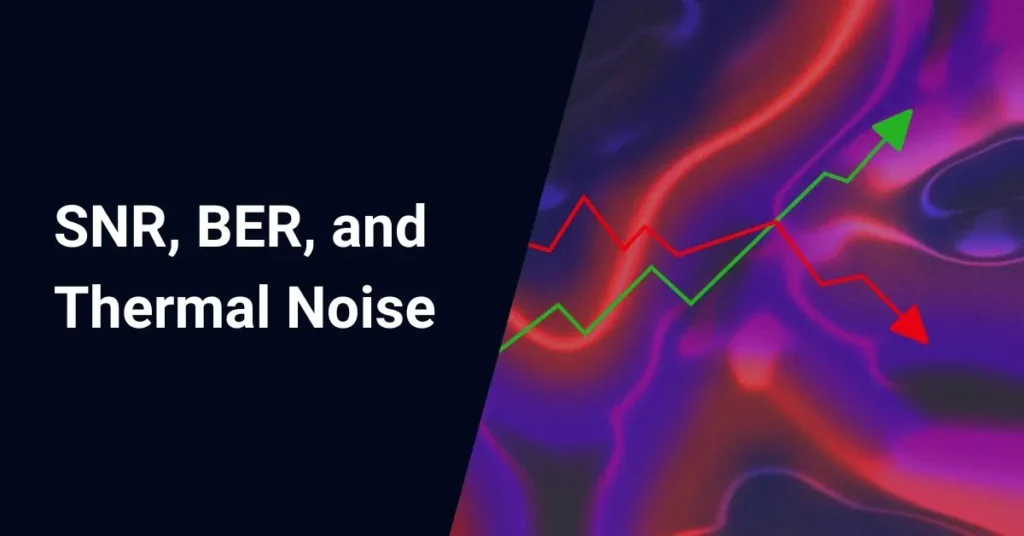Optical fibers are the unsung heroes that make our broadband networks possible. These thin strands of ultra-pure glass carry unbelievable amounts of data across vast distances using beams of light.
The secret lies in the fiber’s ultra-low loss transmission windows at specific wavelength bands tailored to different network roles. Let’s shine a light on what makes each band unique.
Table of Contents
Wavelength bands and their descriptions
| Band | Description | Wavelength range |
|---|---|---|
| 850 Band | 850 nm band | 810 nm-890 nm |
| O Band | Original band | 1260 nm-1360 nm |
| E Band | Extended wavelength band | 1360 nm-1460 nm |
| S Band | Short wavelength band | 1460 nm-1530 nm |
| C Band | Conventional band | 1530 nm-1565 nm |
| L Band | Long wavelength band | 1565 nm-1625 nm |
| U Band | Ultra long wavelength band | 1625 nm-1675 nm |
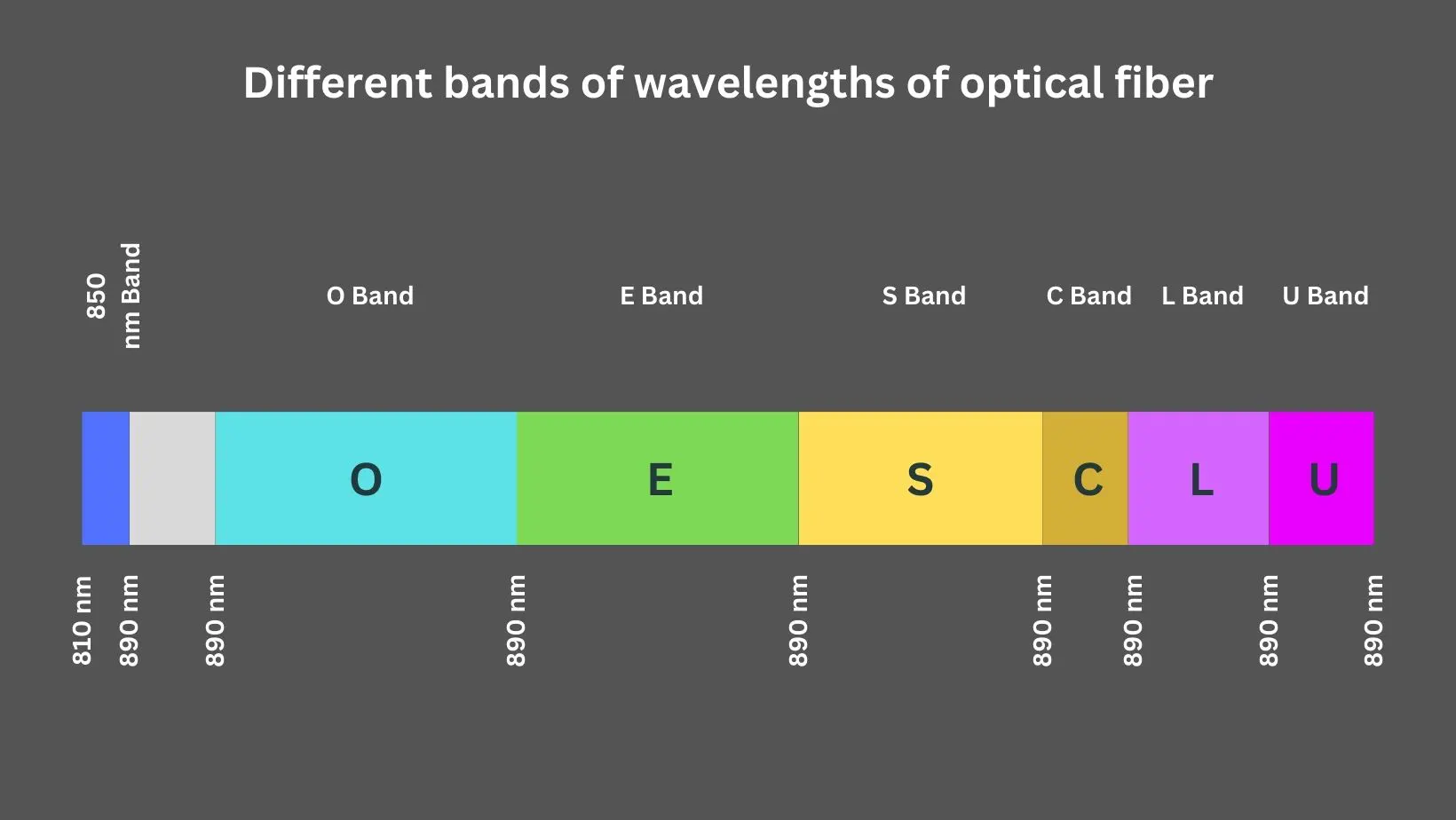
850 Band: The High-Speed Short Haul Workhorse
The 850 nanometer band covering 810-890 nm wavelengths was the first used for short, low-cost fiber links. It remains the prime choice for high bandwidth multidrop networks up to ~500 meters using cost-effective multimode fiber and Vertical-Cavity Surface-Emitting Laser (VCSEL) transmitters.
With a larger core than single-mode, multimode fiber allows multiple light ray paths for short reach. The 850 nm wavelength aligns perfectly with the peak efficiency curve of standard graded-index multimode fiber. This unlocks maximum bandwidth at minimum cost while simplifying the VCSEL transmitter.
The 850 nm band will continue serving as the high-speed workhorse inside data centers, corporate campuses, cell towers, aircraft infotainment, and automotive networking for decades to come.
O Band: Minimizing Loss and Distortion
The Original 1260-1360 nm band carries signals with minimum distortion across the greatest distances of any multimode band and sees loss on par with today’s single-mode fiber.
In a serendipitous quirk of physics, the O-band overlaps with an ultra-low-loss optical transmission window. It became the first wavelength for reliable long-haul telecom and cable TV in the late 1970s using early single-mode fiber.
The O-band also works well for shorter high-bandwidth runs up to ~1 km over multimode fiber. Its balance of low distortion and loss makes it a versatile choice for re-configurable enterprise and metro fiber networks.
E Band: Pushing Fiber Performance
The extended 1360-1460 nm band emerged once fiber manufacturing achieved incredibly pure glass. Early fibers saw heavy E-band signal loss from residual water contamination.
Through a complex glass production refinement called vapor-phase dehydration, scientists reduced hydroxyl impurities. This opened the door to Zero Water Peak (ZWP) fibers optimized for the E band.
Today’s ultra-low-loss E Band matches or even exceeds the original O band performance. However, it took many years for equipment and networks to catch up following massive O band deployment.
Despite higher capacity potential, E band utilization still trails traditional bands, though it continues gaining ground in metro and regional optical networks.
S Band: Enabling Integrated Access Networks
The short wavelength 1460-1530 nm band strikes an optimum balance of low intrinsic fiber loss and component performance. It serves as the standard downstream data channel for many Passive Optical Network (PON) fiber access links.
PON technology powers Fiber-to-the-Home (FTTH) services by connecting many customers to a common fiber junction. The S-band downstream band ensures complete network isolation. Routing downstream 1490 nm S-band on one fiber and 1310 nm upstream/RF video on a second fiber prevents interference.
This enables economical triplexer modules serving all passive optical network signals from common fiber cable. It also allows upgrading deployed fiber without digging up existing routes or disrupting customers. The S-band continues bolstering broadband access capacity to meet demand.
C Band: The Global Telecom Workhorse
The conventional 1530-1565 nm band provides the lowest loss window across all single-mode telecom fibers, making it the dominant band for ultra-long-haul transport networks.
Modern 100G and 400G optical transmission leverages advanced modulation formats and spectrally efficient channel spacing. This requires the C band’s ultra-low attenuation to maintain adequate signal integrity across thousands of kilometers or more.
Global networks also rely on erbium-doped fiber amplifiers (EDFAs) and increasingly dense wavelength division multiplexing (DWDM) to boost capacity. Currently able to carry up to 72 x 400Gbps channels per fiber pair, the C band will continue to anchor tomorrow’s internet infrastructure, scaling to Zettabytes per second!
L Band: Doubling Network Capacity
The longer wavelength 1565-1625 nm band serves as vital spectrum headroom once C-band capacity maxes out between major hub sites.
Rather than laying more fiber, network operators add amplifiers, multiplexers, transceivers, and other optics optimized for the L-band as traffic growth dictates. This allows doubling capacity over existing routes by transmitting an additional 40+ super-channels alongside fully loaded C band systems.
Much of the existing fiber plant and EDFA amplifiers are L-band ready from inception. Turning up additional channels requires simple plugging in L-band components, making capacity easy to scale on-demand with minimal disruption.
The L band continues driving internet growth by extending the life and value of buried fiber infrastructure.
U Band: Keeping Networks Healthy
The ultra-long wavelength 1625-1675 nm band lives in obscurity compared to mainstream telecom bands. It suffers from significantly higher intrinsic fiber attenuation, limiting its useful range.
However, the U band has emerged as the perfect stealth monitoring channel. All active links deploy inexpensive U-band diagnostics for round-the-clock health checks without disrupting revenue traffic.
Embedded U-band sensors analyze fiber loss, amplification gain, signal noise, chromatic and polarization mode dispersion, crosstalk, latency, and more. Network managers remotely log data and alerts to enhance quality, quickly catch degradation, and prevent outages.
So, while invisible to end users, the U band plays a vital role in ensuring robust networks. The same dark fiber and DWDM gear readily supports U-band monitoring alongside active telecom channels.
Wavelength Windows: Engineering Low Loss
Fiber optic networks balance distance with bandwidth, limited by attenuation and dispersion as photons propagate through glass. Telecom engineers optimize data rate and range by matching transmission bands to low-loss optical windows.
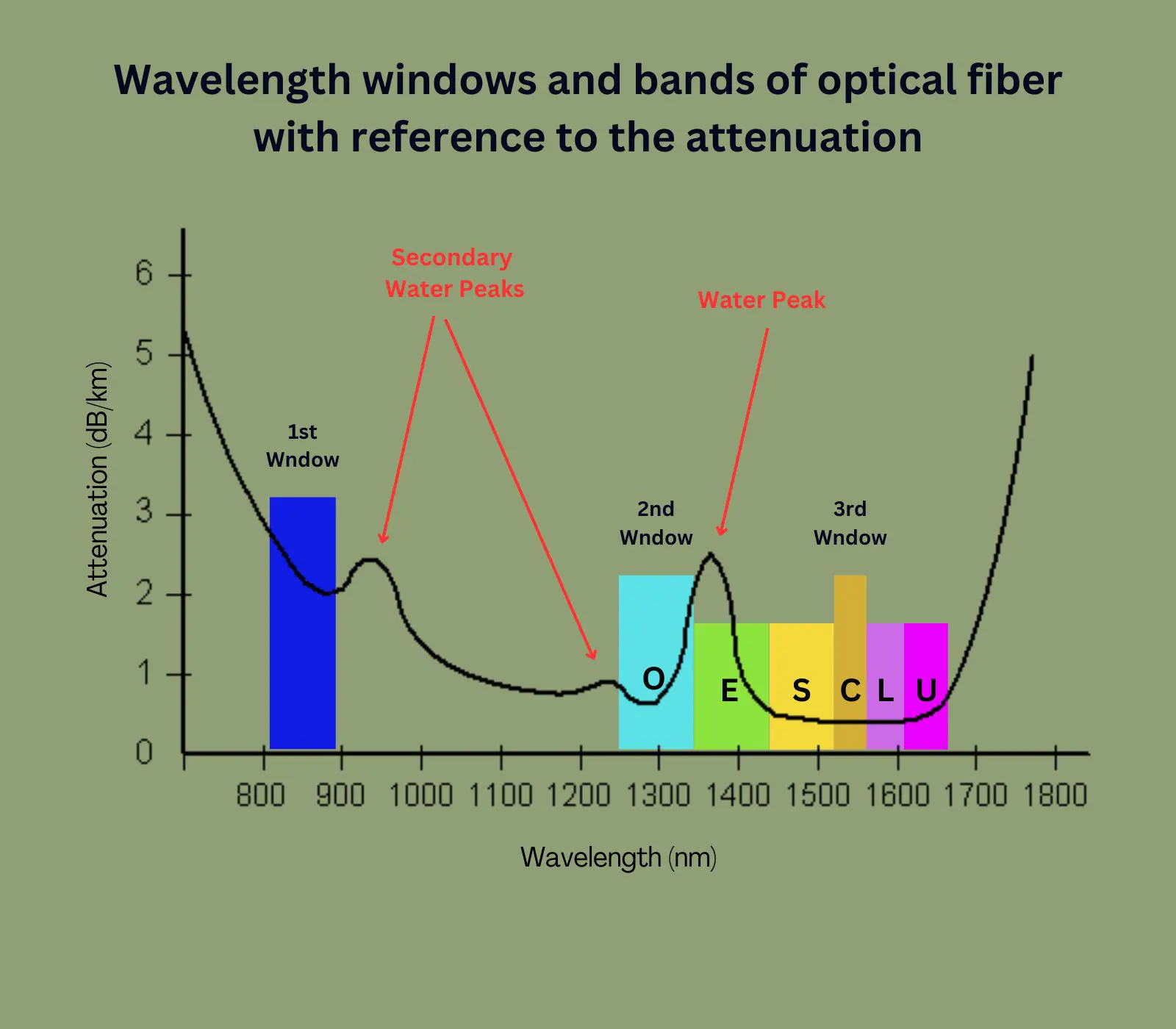
Windows are wavelength regions of ultra-low attenuation centered on bands from 850nm to 1675nm. Early systems exploited windows at:
- 850nm for cheaper multimode fiber
- 1300nm with minimum chromatic dispersion
- 1550nm for single-mode long haul when attenuation rules
Fiber manufacturers relentlessly refined manufacturing, chasing purity to extend low-loss regions across the full spectrum. Chemical vapor deposition, precision preform drawing, hermetic jacketing, and innovations like vapor-phase dehydration tamed attenuation.
Today’s fibers achieve under 0.17 dB per km across the entire range up to 1675nm! This allows unregenerated transmission exceeding 300 km at 100Gbps across multiple bands.
Yet vestiges of historic windows persist in network architectures. Short reach favors 850nm for cost savings. Metro and regional networks balance the fiber generation mix by using multiple bands. Critical core links still run predominantly on the original 1550nm C-band for reliability – but not due to today’s fiber loss.
Rather than attenuation, amplification and multiplexing economics now anchor the C-band. Erbium-doped fiber amplifiers, Raman pumping, and dense WDM transport maximize capacity-distance products here. Other wavelengths achieve similar fiber loss yet lack ubiquitous optical gear support.
So next time you surf the net, take a moment to appreciate the ever-expanding low-loss windows that make our connected world possible!
Summary
Optical fibers carry data through low-loss wavelength bands customized for different network roles. Together, these bands form the backbone supporting global digital connections.
Different wavelength bands serve specific purposes, from short links to long-haul lines. Engineers optimized each band to balance capacity, reach, and cost for diverse network needs.
Careful engineering extended transmission windows across the spectrum. Multiple bands now work together to maximize affordable connectivity everywhere through glass pipelines filled with light.
FAQ
What are the 4 dominant wavelengths used in fiber optic systems?
The four main wavelengths used in fiber optic systems are:
850 nm: Primarily used in multimode short-range applications like building networks and data centers due to its low cost and readily available LEDs.
1310 nm: Commonly used in long-haul single-mode applications due to its lower attenuation compared to 850 nm and good availability of laser sources.
1550 nm: The “sweet spot” for long-haul, high-bandwidth single-mode transmission due to its minimal attenuation and mature technology.
1490 nm: Used in certain Passive Optical Networks (PONs) for downstream data transmission due to its low cost and compatibility with existing equipment.
Why are wavelengths 1310 nm and 1550 nm desirable for optical transmission?
These wavelengths fall within the “low-loss windows” of silica glass, where the fiber absorbs minimal light, allowing signals to travel longer distances. Additionally, mature and cost-effective laser sources and detectors are readily available at these wavelengths.
What is the difference between 1310nm and 1550nm?
Both offer low attenuation, but 1550 nm boasts even lower loss and slightly higher bandwidth potential, making it ideal for ultra-long-distance, high-capacity links. However, 1310 nm equipment tends to be slightly cheaper and may be preferable for shorter distances.
What are the uses of 1310 nm and 1550 nm wavelength optical fiber?
1310 nm: Long-haul data transmission, metropolitan area networks (MANs), enterprise networks, and backhaul links.
1550 nm: Ultra-long-haul data transmission, submarine cables, high-bandwidth backbones, DWDM systems.
Can optical modules with wavelengths of 1310nm and 1550nm be connected?
No, they cannot directly connect unless specifically designed for dual-wavelength operation. Different wavelengths require different equipment (lasers, detectors, filters) and protocols.


